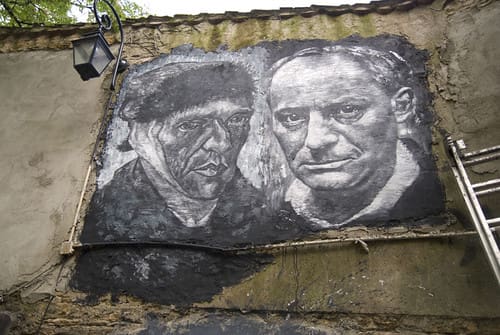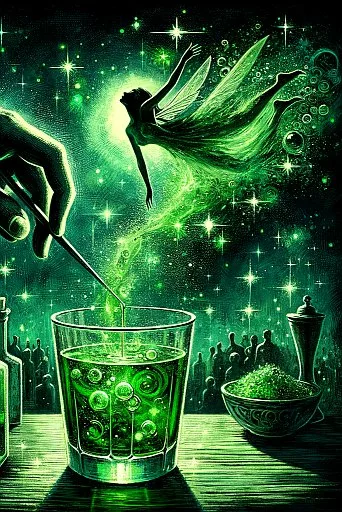Absinthe, drop by drop, in an emerald sea where every longing drowns. Drop by drop, in a slow descent into an inferno that opens its arms and clutches at it in an embrace of seductive lust.
Drop by drop, in the waiting that becomes infinite and thus millimeter distance. And your lips, quivering and biting, already shine in the brilliant glow of a flame without fire.
The green fairy laughs, skims the faded outline of my charcoal soul, and swallows me into the belly of a night satiated with stars.
The ecstasy advances, slow as the February fog; it slips down to the depths of my bowels, awakens dormant heats, and lets me revive what the fires extinguished in desperate silence. Come green fairy! Descend like a goddess and mirror yourself in my eyes, intoxicated with madness!
Drop by drop in a winter that gasps with scratchy voluptuousness!
Art historical considerations on absinthe
Absinthe, a mysterious and captivating drink, occupied a prominent place in the lives of the cursed poets of past ages. Known for its emerald hue and robust herbal flavors, this infamous alcoholic spirit has fueled the creativity and tortured souls of many famous artists.
Originating in Switzerland in the late 18th century, absinthe gained popularity, particularly among the bohemian communities of Europe. Its unique properties and mythical charm attracted poets and artists. The heady combination of absinthe, anise, and fennel provided a sensory experience, painting their world in vibrant colors and opening the door to their imagination.
Under the influence of absinthe, poets and artists experienced an elevated state of perception, which allowed them to deepen their innermost thoughts and emotions. The drink has become a catalyst for inspiration, inciting passionate prose and evocative artwork. Many iconic figures, including Charles Baudelaire, Arthur Rimbaud, and Vincent van Gogh, were known to partake of this forbidden elixir, finding solace and inspiration in its enchanting depths.

However, the allure of absinthe came at a price. Its high alcohol content and the presence of thujone, a chemical compound found in absinthe, caused hallucinations and erratic behavior. As the drink’s notoriety grew, so did the controversy surrounding its consumption. Both governments and concerned citizens have called for its ban, citing the drink’s alleged harmful effects on mental health.
Despite its tumultuous history, absinthe remains an intriguing symbol of artistic rebellion and creativity. Today, its consumption is regulated, and the once-cursed poets and artists who indulged in its charms are remembered for their contributions to the artistic world. Absinthe continues to captivate the imagination, whispering promises of inspiration and artistic transcendence to those willing to explore its forbidden allure.
If you like this poem, you can always donate to support my activity! One coffee is enough!


